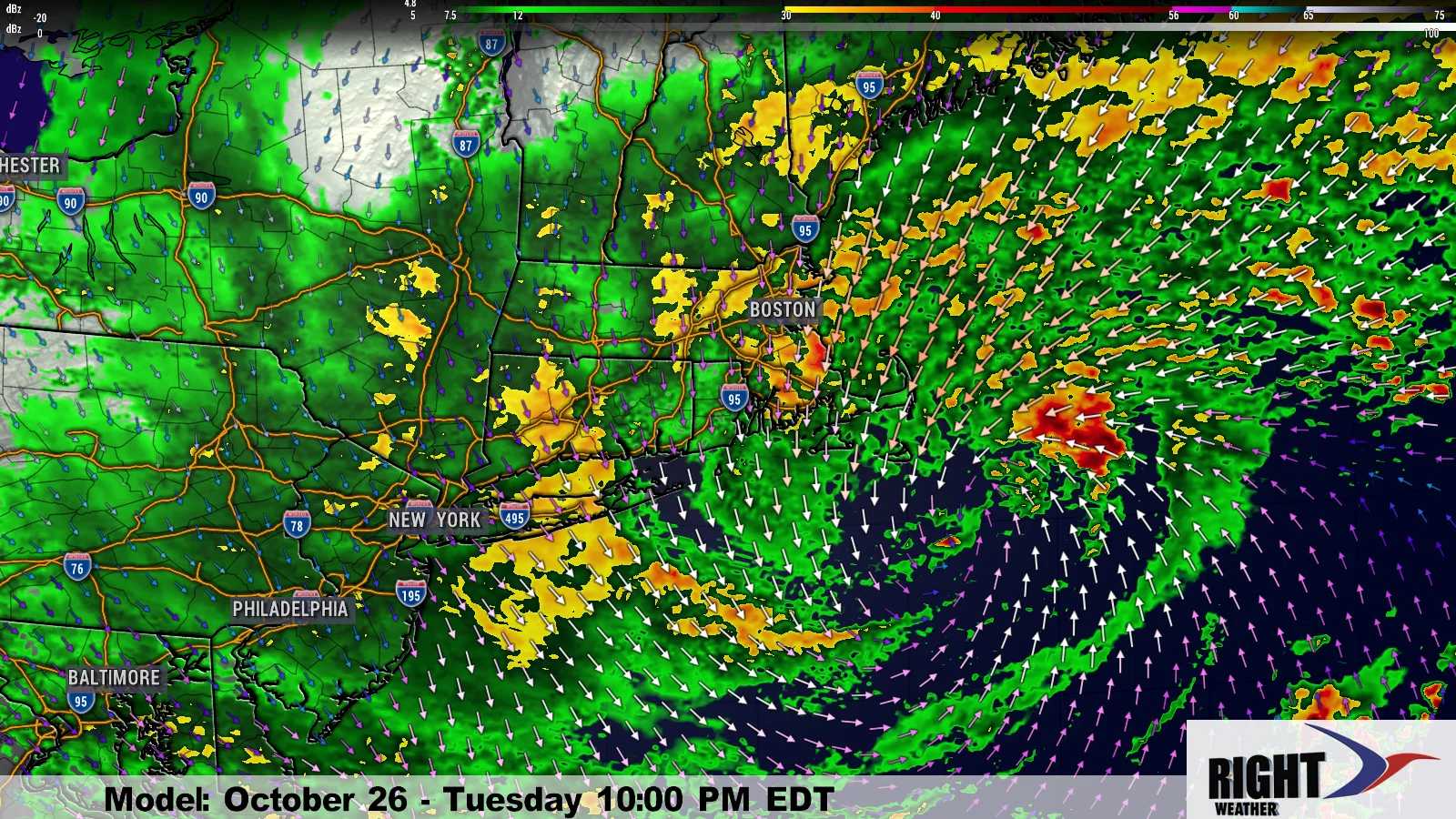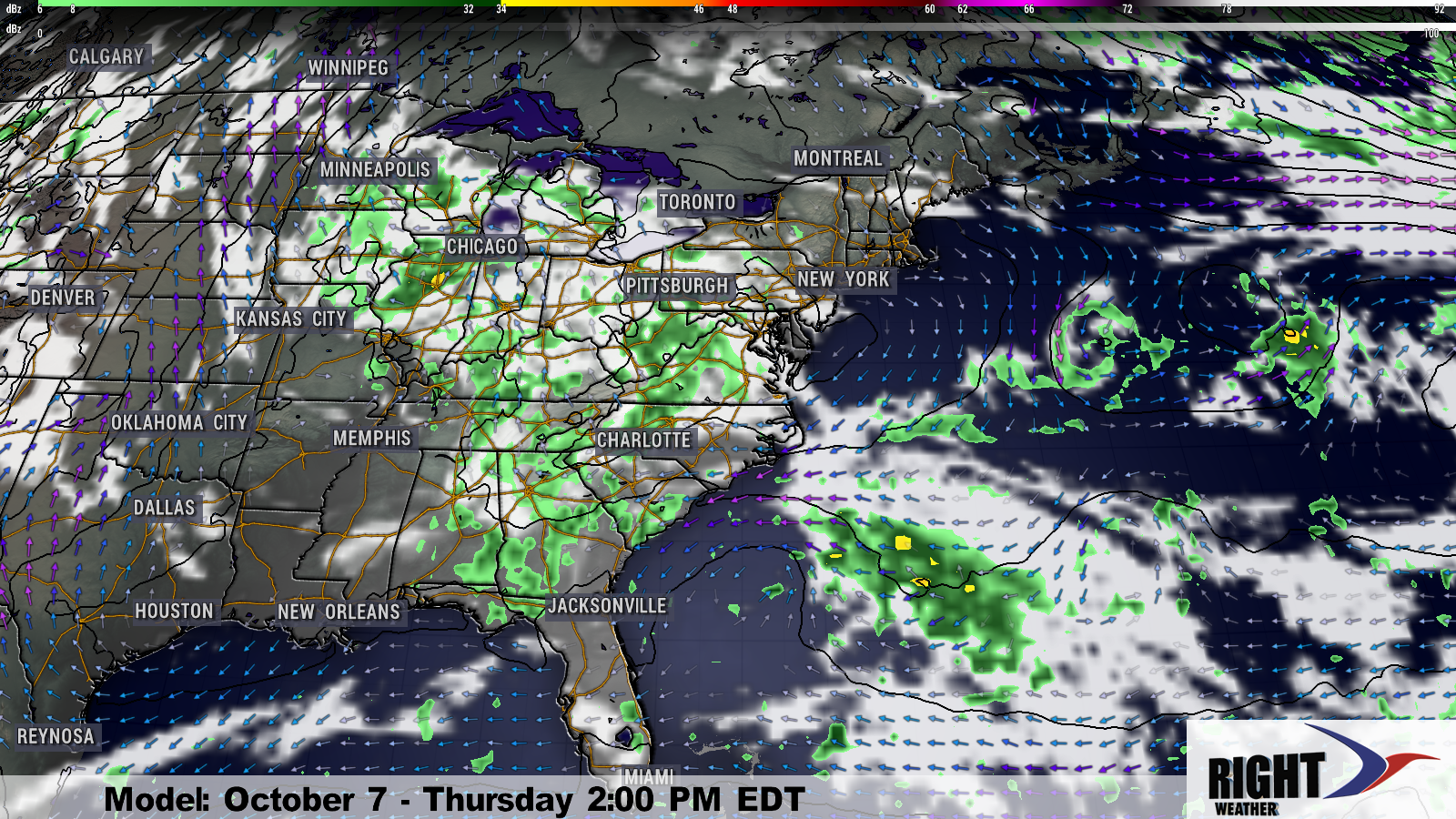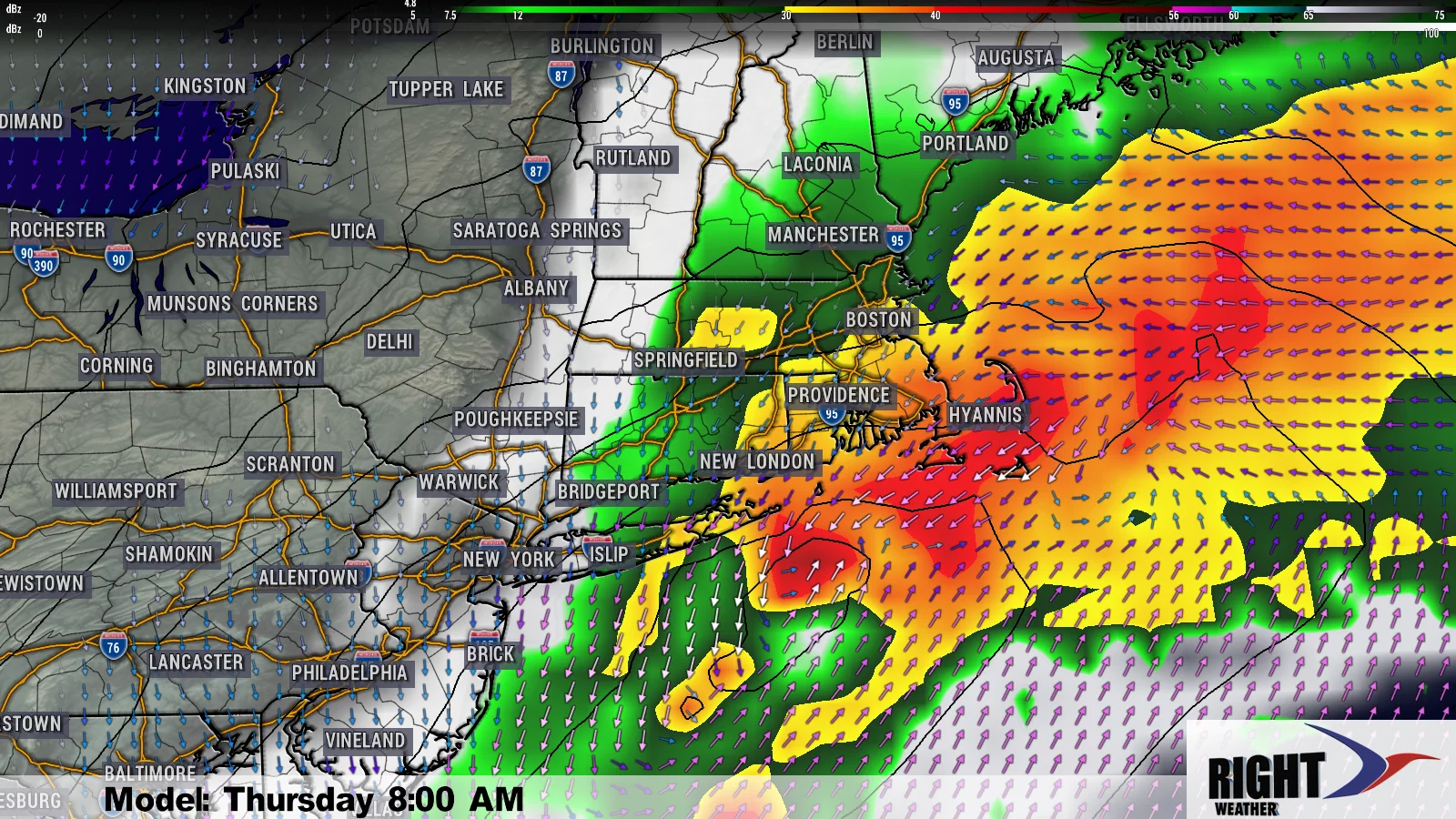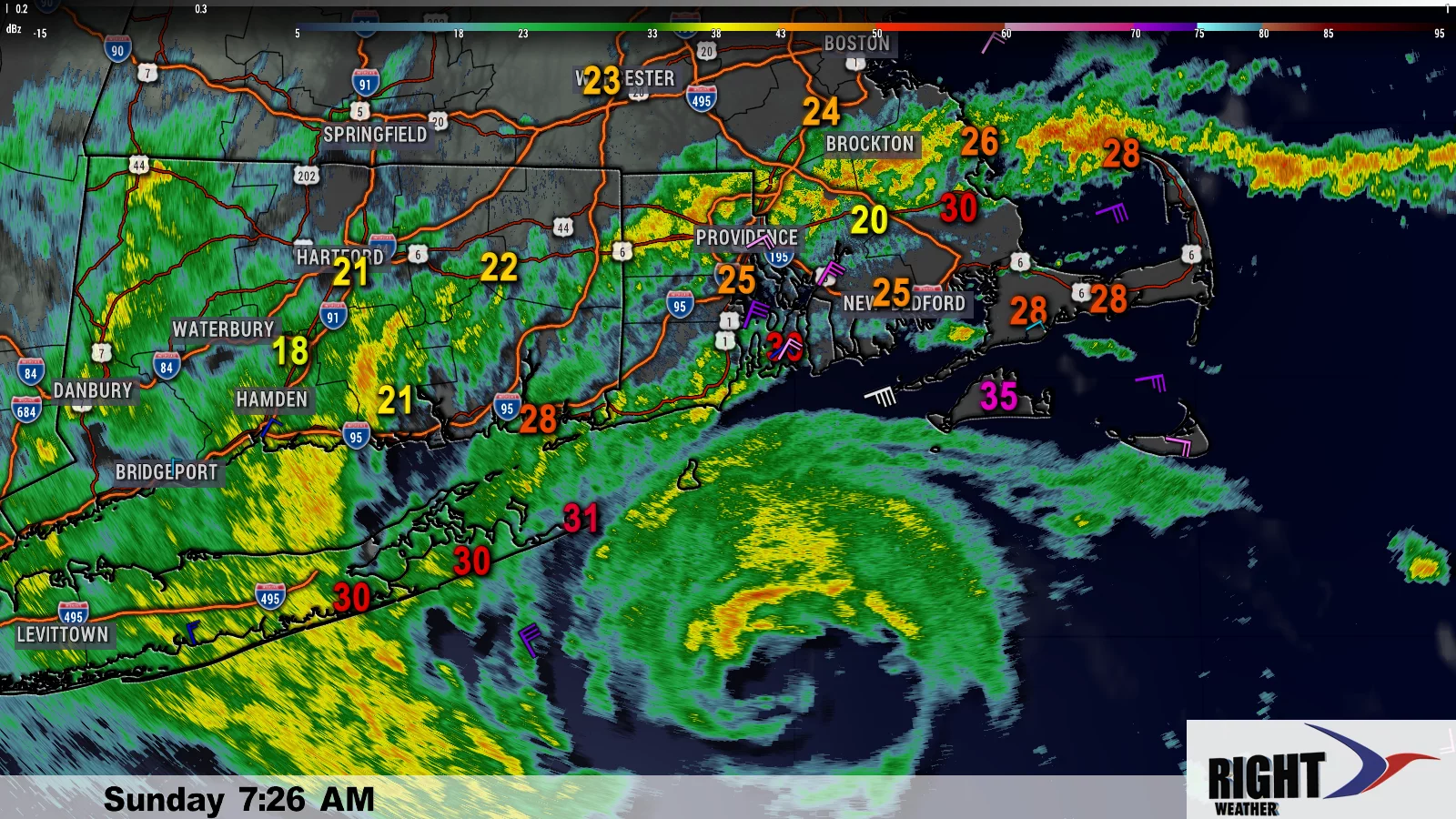A good climate change story is hard to find
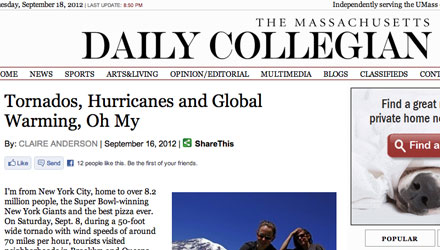
At Right Weather, we try to aggregate important climate change news from around the planet so you don’t need to scour the internet trying to find out what the latest scientific studies say about global warming. Lately, it has been particularly difficult to find a non-partisan online article about climate change. It could be because we are in election season, but just about every “news” article I find is more political than scientific. The politicalization of this issue is nothing new, but I think it may be reaching new heights in the past few weeks.
Unfortunately, there are more opinion/editorial pieces than anything else when it comes to recent climate change material on the web. Some of the articles are well thought out and insightful, others are incredibly biased, and a few are just incredibly bad. One in particular stands out to me. Granted it’s in a college publication, and is written by a college student, but there are people who read this stuff and take it for granted. So, for what’s it’s worth, we’ll take a look at this op/ed entry titled Tornados, Hurricanes and Global Warming, Oh My from The Daily Collegian – independently serving the UMASS community since 1890.
Before anyone gets upset about my decision to pick apart this article, you should know that my intention is to highlight the kind of misinformation that can be misinterpreted as the truth on important issues like climate change. This is an extreme, and sometimes comical, example, but I found it through a simple Google News search for “climate change news”. Anyone doing the same may have come away from reading it with an unfounded opinion on a rather important topic.
In the first paragraph Claire Anderson writes:
I’m from New York City, home to over 8.2 million people, the Super Bowl-winning New York Giants and the best pizza ever. On Saturday, Sept. 8, during a 50-foot wide tornado with wind speeds of around 70 miles per hour, tourists visited neighborhoods in Brooklyn and Queens.
OK, I need to be careful about how I critique this. I’m going to stick to writing about the factual errors and incorrect assumptions rather than any grammatical errors or just plain awkward sentences like: On Saturday, Sept. 8, during a 50-foot wide tornado with wind speeds of around 70 miles per hour, tourists visited neighborhoods in Brooklyn and Queens. Am I the only one missing the connection between the tourists and the tornado? Were they the only people in Brooklyn and Queens?
A couple of paragraphs later we get this:
Tornadoes most often occur in the Tornado Alley region of the Midwest with a few throughout the rest of the North America and the world. But over the last three months, they have been touching down more frequently. According to the United State Geological Survey, there have been 34 earthquakes worldwide with a magnitude of 5.1 to 7.8 and they are in more uncommon territory, like the Northeast. They are also becoming more deadly: last year 550 people were killed by tornados, making it the deadliest season in 75 years.
Region-wide, Tornado Alley in the Midwest is most likely to see tornadoes, but Florida is actually the third ranked state when the number of tornadoes are broken down by state. I can actually let that slide, it’s the next sentence that is baffling. Tornadoes have most decidedly not been touching down more frequently in the last three months. In fact, one of the hallmarks of the past several months has been the lack of severe weather. Just look at the numbers.
TORNADO TOTALS AND RELATED DEATHS...THROUGH SUN SEP 09 2012
NWS STORM PREDICTION CENTER NORMAN OK
1216 PM CDT MON SEP 10 2012
...NUMBER OF TORNADOES... NUMBER OF KILLER
TORNADO DEATHS TORNADOES
..2012.. 2011 2010 2009 3YR 3YR 3YR
PREL ACT ACT ACT ACT AV 12 11 10 09 AV 12 11 10 09 AV
JAN 97 79 16 30 6 17 2 0 0 0 0 2 0 0 0 0
FEB 63 56 63 1 36 33 15 1 0 9 3 7 1 0 2 1
MAR 225 155 75 33 115 74 41 1 1 0 1 10 1 1 0 1
APR 233 206 758 139 226 371 6 363 11 6 127 1 43 2 3 16
MAY 139 121 326 304 201 279 0 178 7 5 64 0 9 4 3 5
JUN 116 107 160 324 270 251 4 3 12 0 5 2 1 6 0 2
JUL 24 - 103 146 118 122 0 0 2 0 1 0 0 1 0 0
AUG 52 - 57 55 60 57 0 2 1 0 1 0 2 1 0 1
SEP 23 - 51 57 8 39 0 0 2 0 1 0 0 2 0 1
OCT - - 23 108 65 65 - 0 0 1 0 - 0 0 1 0
NOV - - 44 53 3 39 - 5 0 0 2 - 2 0 0 1
DEC - - 15 32 38 34 - 0 9 0 3 - 0 4 0 1
---- ---- ---- ---- ---- ---- -- -- -- --- --- -- -- -- -- --
SUM 972* 724 1691 1282 1146 1382 68 553 45 21 206 22 59 21 9 30
Reading this table from the Storm Prediction Center it’s easy to see that May, June, and July all saw less than half of the three year average of tornadoes in the United States. August was slightly below average, and, so far, September is about average. July wasn’t just below normal – it was record setting. Officially, there were only 12 tornadoes nationwide – shattering the old record for fewest July tornadoes (42) set in 1960. I think writing “they have been touching down more frequently” is about as irresponsible as me writing an op-ed piece on the Red Sox claiming they’ve been playing good baseball since the all-star break.
The next sentence about earthquakes comes from out of nowhere – sort of like an actual earthquake. I’ll take Ms. Anderson’s word for it that there have been 34 earthquakes between magnitude 5.1-7.8, but, the part about them occurring in more uncommon territory, like the Northeast? I can’t let that one go. Actually, there hasn’t been a single earthquake in the Northeast above 3.0, unless you count Virginia as the Northeast (they had a 3.1), in 2012.
In the next sentence, after a short diversion to earthquakes, we’re back to tornadoes. It is true that 550 people were killed by tornadoes in the United States in 2011, but, one active season does not make a trend. Once again, when looking at the facts, we can see that deadly tornadoes have actually been on the decline when adjusted for population over the past century.

A large part of the decline is surely due to better technology and advanced warning of potentially deadly storms, but trying to claim that tornadoes are becoming more deadly based on one year’s stats is like saying that Tom Brady is a lousy quarterback if he throws three interceptions in a single game. Yes, I like sports analogies.
One paragraph later, we get this inexplicably inaccurate summary of climate change.
The change in temperature and global climate is due to global warming. Hotter temperatures caused by the burning of fuels for cars, and other industries have created holes in the ozone layer. The ozone layer protects the earth from most of the sun’s dangerous waves, keeping the earth from getting too hot. The holes allow more heat into the atmosphere, causing the polar ice caps to melt. This throws off the natural weather systems, causing havoc, such as more intense rain and snow storms than ever before.
Can anyone write whatever they want in an opinion piece and get it published? Apparently, in The Daily Collegian, yes. First, hotter temperatures caused by CO2 emissions have not created holes in the ozone layer. Second, the ozone layer does not protect the Earth from the sun’s “waves” that allow the earth to get too hot. Also, the holes in the ozone layer do not allow more heat into the atmosphere causing the polar ice caps to melt. Other than that, it’s a solid paragraph.
Later in the piece, Anderson writes:
In 2010, a 7.0 magnitude earthquake struck Haiti, causing roughly 52 powerful aftershocks, killing 316,000 people, injuring 300,000 and leaving an estimated 1 million people homeless.
In 2011, a 9.0 earthquake rocked Japan, the most powerful to ever hit the nation and one of the five most powerful ever recorded. The hurricane triggered a tsunami which devastated the entire country and led to a Level 7 meltdown in three reactors at the Fukushima Daiichi nuclear complex. An estimated 15,867 people were killed, 6,109 were injured and over 2,909 went missing, according to the Japanese National Police Agency. It was one of the most expensive natural disasters in world history, costing an estimated $235 billion in repairs, according to the World Bank.
Once again, we’re mysteriously reading about earthquakes in an article on climate change. Apparently, nobody has told Ms. Anderson that climate change has an impact on what is happening above the Earth’s surface, not beneath it – even middle school kids know that (You’ll get that later). Then there’s the little part about the earthquake in Japan becoming a hurricane and causing a tsunami. That’s the thing about natural disasters, they’re mix and match – just put whatever one you need in a sentence to try and make a point.
Finally, a couple of paragraphs later, we get to the reason why Ms. Anderson wrote this article. The lead is buried ten paragraphs in, but it’s basically an attack on the Republican party.
But despite the overwhelming evidence, many politicians and members of the Republican Party refuse to acknowledge the existence of global warming. They are wrong. It is not something you can believe in; it’s not a religion, it is scientific fact. Ignoring facts does not mean the situation will get better – it will get worse, even middle school kids know that. But not the some Republicans, it seems.
